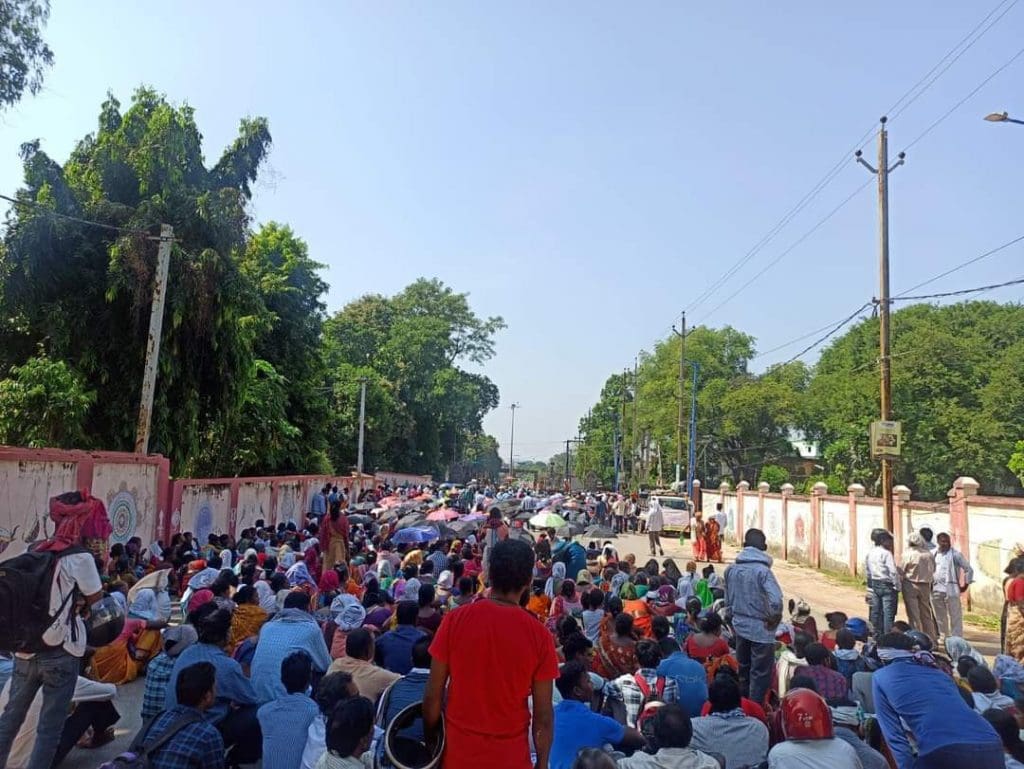
Nearly 5000 Adivasis from Oraon, Kisan, and Kharia communities in Odisha marched 65 km to Sundargarh, protesting the land grab by the Odisha government favoring Dalmia Cements for mining limestone.
The tribals were on a four-day march to the Collector’s office over the acquisition of 77 acres of land belonging to five panchayats for the expansion of Dalmia Cement Bharat Limited or OCL’s plant in Rajgangpur.
In videos, they were seen raising slogans against the administration for turning a deaf ear to their protest since a long.
“The forest is our mother and we cannot be lured to part with it,” the villagers said.
The affected tribal villagers in the Rajgangpur block of Sundargarh district have been refusing to part with their ancestral land for expansion of the Lanjiberna mines of Dalmia Cement Bharat Ltd (formerly OCL India Ltd). The protesters had rejected the proposed R&R package.
They have also been raising voices against the gross violations of constitutional provisions related to the 5th Schedule Area and LARR Act, 2013 in the process of land acquisition.
The OCL India, a Dalmia group company, has been producing cement sourcing limestone and dolomite from Lanjiberna mining in Rajgagnpur Block since 1951. It had expanded its cement plant capacity periodically; so also the mining area. In 2017, it had proposed to expand the capacity of the plant from 4.2 MTPA to 9.5 MTPA and its mining area. For the expansion of mining, the Government of Odisha has issued notices (in February, 2020 and February 2021) to acquire 990.67 acres of private agricultural land of 7 revenue villages spread across 5 Gram Panchayats under Kutra and Rajgangpur Block.
“These are largely Scheduled Tribes dominated villages. Their population range from 94 % to 74% at the village level. Economically, majority of the population depend on agriculture and most of them are marginal and small peasants. According to SIA study report the average landholding of the family is 1 to 1.5 acres only. Owing to mining for the last several decades, agriculture has been badly affected in the surrounding area. Water retention capacity of land has gone down, slowly turning the once fertile land into dry land. Local people have been forced to leave cultivation in winter season due to excess air pollution caused by limestone mining and cement factory. Water table is going down in the area and safe drinking water is a big problem in many of the villages. Prevalence of TB is a common phenomenon; people are dying of this disease even after undergoing treatment. A small section of people are employed as drivers, security guards and as casual workers in the mines and factory, not as regular employees but as casual workers under labour contractors. Thus, disaffection among local communities has already been there due to lack of employment opportunities, the ill effects of mining on agriculture and other aspects of lives in general. Besides, sufferings of Adivasis caused by mining and industry induced displacement in the past and the apprehension of loss of Adivasi identity closely tied to land have led people to protest against the proposed land acquisition,” read a report of PUCL on the protests.



